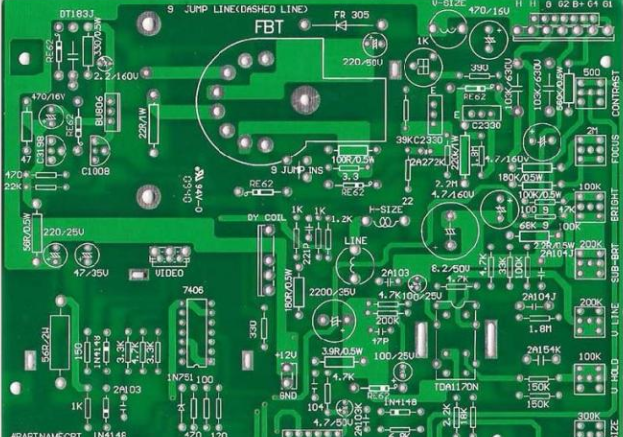According to the production materials, printed circuit boards can be divided into rigid printed boards and flexible printed boards. Rigid printing plates include phenolic paper layer pressure plate, epoxy paper layer pressure plate, polyester glass sensor plate, and epoxy glass layer pressure plate. Flexible printed circuit board, also known as flexible printed circuit board, is a high-reliability and high-curvature printed circuit board based on polyimide or polyester film. The circuit board has good heat dissipation, and can be bent, folded, flexed, and moved and stretched randomly in three-dimensional space. FPC can be reduced in size to achieve lightweight and miniaturization to achieve the integration of components and wire connections. FPC is widely used in electronic computer communication spacecraft and other industries...
(1) FPC is small in size and light in weight.
FPC can move and bend.
(3) FPC has excellent dielectric properties and heat resistance.
(4) FPC has high assembly reliability and assembly operation.
5/FPC can install three-position connection.
6/FPC is good for heat transmission.
The cost is 7% lower.
(8) Continuity of processing.

A soft board is a printed circuit made of a flexible insulating substrate, which has many advantages that a hard printed circuit board does not have.
The product is small in size and light in weight, which greatly reduces the volume of the device. Electronic products need to develop in the direction of high density, small size, light weight, thinness and reliability. It has a high degree of flexibility, can be freely bent, twisted, and folded, and can be arranged in three dimensions according to the space layout requirements to change the shape. Perform any movement and expansion in the three-dimensional space to achieve the integration of component assembly and wire connection.
It has excellent electrical properties, high temperature resistance, and fire resistance. It has good chemical stability and high reliability. The assembly reliability is high, and the circuit design is convenient, which greatly reduces the assembly workload, reduces the performance of the circuit, and reduces the cost of the whole machine. Through the use of reinforcing materials to increase its strength to achieve additional mechanical stability. The design of the combination of software and hardware also made up for the small defects of the flexible substrate in the component carrying capacity to a certain extent.
It can be high density. In the past 100 years, with the advancement of integrated circuit integration and mounting technology, the high density of printed boards can be developed.
High reliability.. Through a series of inspections, tests and aging tests, the long-term use period of PCB can be guaranteed for 20 years.
Can be designed. Various properties of PCB (such as electrical, physical, chemical, mechanical, etc.) can be achieved through design standardization and standardization.
It is productive. The application of modern management can standardize, scale, and automate production to ensure the consistency of product quality.
Can be tested. A more complete test method, test standard, various test equipment and instruments have been established to inspect and identify the eligibility and service life of PCB products.
After electronic equipment uses printed boards, due to the consistency of similar printed boards, manual connection errors are avoided. The automatic insertion or installation of electronic components can be realized to ensure the quality of electronic equipment, reduce labor productivity, and facilitate maintenance.
There is a difference between rigid circuit boards and flexible circuit boards. Rigid circuit boards have been widely used in flexible circuit boards due to the early appearance of rigid circuit boards. Therefore, most of the design elements of rigid circuit boards have been applied to the design of flexible circuit boards, so what is the difference between rigid circuit boards and flexible circuit boards? Let us share with you.
Current-carrying capacity of conductors: Compared with rigid circuit boards, flexible circuit boards have relatively poor heat dissipation performance, so sufficient conductor width must be provided. Due to the heat dissipation problem of the flexible circuit board, additional width or spacing of the wires is required.
Shape 2. Generally speaking, the rectangle can save the base material well, and should have enough free edges. If the inner corner is sharp, it may cause the board to tear. Therefore, the smaller wire width and spacing should be minimized, and the transition must be as smooth as possible. Sharp corners will cause the stress to be naturally concentrated and lead to failure.
Flexibility: The flexibility of rigid circuit boards is certainly not as good as flexible circuit boards.